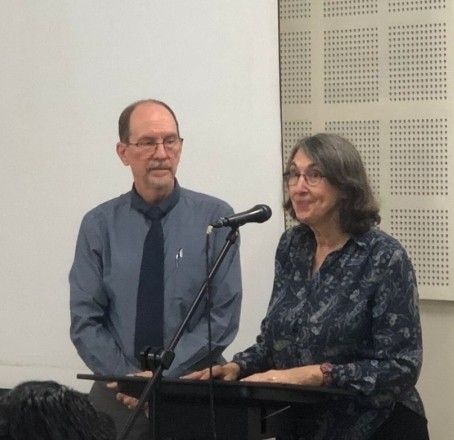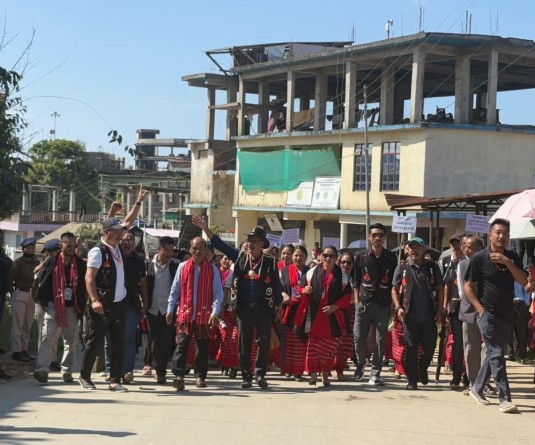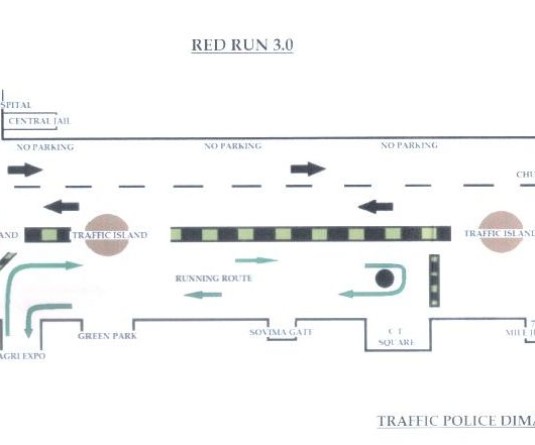Todd Saurman and Mary Beth Saurman address the inaugural session of the two-day ‘Ethno Arts International Seminar - Benefits of using Ethno Arts,’ at the Margaret Shishak School of Music (MSSM), building Patkai Christian College (Autonomous) on October 21. (Morung Photo)

Morung Express News
Patkai | October 21
How does one study Ethnic Arts within the culture and how indigenous artistic expressions can be used appropriately and fitted contextually and effectively into different domains?
These are some of the issued being discussed and analysed at a two-day seminar titled, “Ethno Arts International Seminar - Benefits of using Ethno Arts,’ which kicked off at the Margaret Shishak School of Music (MSSM), Patkai Christian College (Autonomous) on October 21.
The MSSM in collaboration with South Asia Consulting and Training Services (SACTS) is organising the seminar in partnership with the Task Force for Music and Art (TaFMA) Nagaland.
During the seminar, participants will be introduced to Ethno Arts, and study how it can be fitted into different domains such education, media, bible storying, trauma healing, language and development and so on.
They will be imparted knowledge on ‘ways to research local arts and music’ by facilitators, the husband-wife duo of Todd Saurman and Mary Beth Saurman as well as Gangadhar B Amar.
The Saurmans are Ethno Arts Consultants and Guests Faculty in Dallas International University, Texas, USA; Payap University, Thailand; and All Nations College, United Kingdom while Amar is an Ethno Arts Consultant Araadhak India Ministries and the CEO Araadhak Arts & Music School, among others.
Speaking at the inaugural session, PCC Principal, Dr Thepfuvilie Pierü expressed hope that through the facilitators’ discourses and sharing of in-depth knowledge about the music and Ethno Arts, the students and faculty of PCC and all the music lovers in Nagaland would be immensely benefitted. He further acknowledged the TaFMA’s support and said that through such collaboration with the MSSM in the future, music and artscan betaken to higher levels.
What is Ethno Arts?
Elucidating on importance of Ethno Arts, Mary Saurmandwelt on how culturally appropriate use of indigenous artistic expression can enable deeper understanding and meaning to worship and other attributes.
She narrated that the couple started on their journey of life together in music therapy and creative arts therapy as well as working with other therapists together for 13 years prepared them for the next - ethnomusicology – or study of ethnic music or the music of other cultures.
“But we realised very quickly that if we study just music, we would miss so many other parts of the culture and people's lives. So, we expanded to call It Ethno Arts, where we're looking at Ethnic Arts within the culture,” she added.
Stressing on the importance of such contextualisation, she recalled the first overseas experience with her husband to PapuaNew Guinea, where they were welcomed with an ‘exciting’ all-night singing event, with dances, music, beautiful costumes and headdresses.
However, when they attended the Sunday worship service, the newly-converted Christianstreated them to anEnglish song, ‘The wise men built his house upon a rock.’
Incidentally, when translated, it so happened that the area called ‘mission in the mud,’ had no rocks and so they could not understand the imagery of the song,’ she noted.
‘They were just singing, to honour God, but with no meaning in their hearts,’ she added.
Accordingly, wequickly knew and believe now that we want to encourage groups to have deep meaning, she informed, adding that there are variety of groups with different languages and even dialects within.
When songs and others form of expression connect with one’s identity, there is deeper meaning, freshness and understanding, she implied.
On his part, Todd explained how people have learned new types of music from other cultures all so many cultures influencing each other.Among other, he also cited how scripture from a small indigenous group called the Hebrew people has been communicated through all these thousands of years.
He further cited how the First Corinthians Chapter 14 in the Bible talks different instruments and how instruments communicate. For instance, when people hear the sound of the trumpet, they know whether it's a call to war or it's something else wedding or funeral.
Every culture and language have their own ways of communicating and people should clearly understand the message, Todd highlighted.
We should be using our own language and music that people will understand when they hear and understand the message, he stressed.
What is your heritage and what is going to be communicated to people? Todd further posed, adding that during the seminar ‘we going to talk together, discuss things and learn from each other.’





